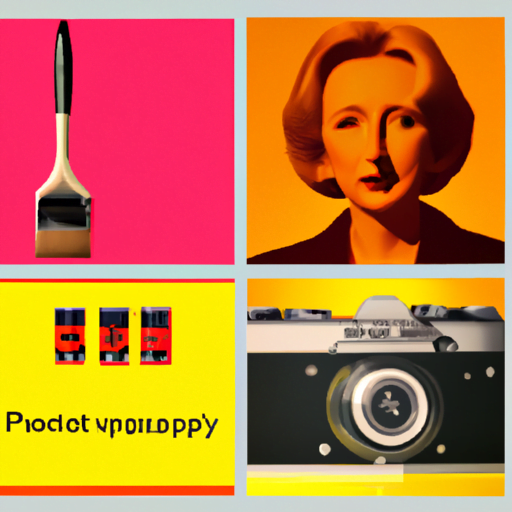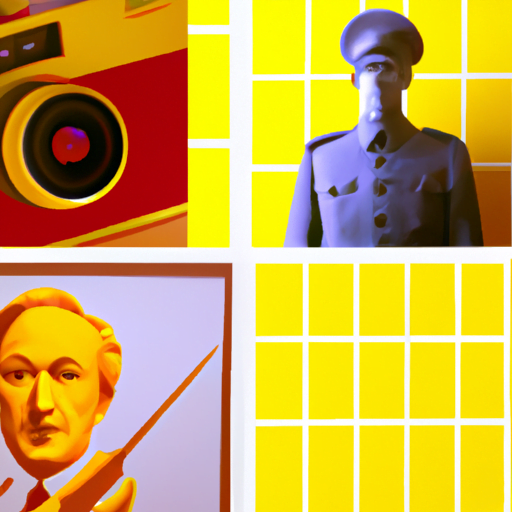
-
Table of Contents
The Role of Design in Political Satire

Political satire has long been a powerful tool for social commentary and critique. It allows artists and designers to express their opinions on political issues in a humorous and often thought-provoking way. While the content and message of political satire are crucial, the role of design in delivering that message should not be underestimated. Design plays a significant role in shaping the impact and effectiveness of political satire, from the choice of visual elements to the overall composition. In this article, we will explore the various ways in which design influences political satire and examine some notable examples.
The Power of Visual Elements
Visual elements are at the core of political satire. They have the ability to convey complex ideas and emotions in a concise and accessible manner. Designers use various visual techniques to enhance the impact of their satirical work:
- Caricature: Caricature is a popular technique in political satire that exaggerates the physical features and characteristics of political figures. It not only adds humor but also helps to create a recognizable and memorable representation of the individual.
- Symbols and Icons: Symbols and icons are powerful tools for conveying meaning in a simple and universally understood way. Designers often use symbols and icons to represent political ideologies, parties, or specific events.
- Color and Typography: The choice of color and typography can greatly influence the tone and mood of political satire. Bold and vibrant colors may be used to evoke strong emotions, while typography can be manipulated to emphasize certain words or phrases.
One example of the power of visual elements in political satire is the work of cartoonist Steve Bell. Bell’s cartoons in The Guardian often feature exaggerated caricatures of political figures, such as his portrayal of former British Prime Minister Tony Blair with large, expressive eyes and a wide grin. These visual elements not only add humor but also help to create a lasting impression of the individual being satirized.
The Role of Composition
Composition is another crucial aspect of design in political satire. The arrangement and placement of visual elements can significantly impact the message and effectiveness of the satire. Designers carefully consider the composition to ensure that the intended message is conveyed clearly:
- Balance and Proportion: A well-balanced composition helps to create a visually pleasing and harmonious image. Designers use proportion and symmetry to guide the viewer’s eye and create a sense of order.
- Contrast: Contrast is used to highlight important elements and create visual interest. Designers may use contrast in color, size, or shape to draw attention to specific aspects of the satire.
- Visual Hierarchy: By establishing a visual hierarchy, designers can guide the viewer’s attention and emphasize the most important elements of the satire. This can be achieved through the use of size, color, or placement.
A notable example of effective composition in political satire is the work of graphic designer Shepard Fairey. Fairey’s iconic “Hope” poster, created during Barack Obama’s presidential campaign, features a simple yet powerful composition. The image of Obama is placed at the center, surrounded by bold typography and a contrasting color scheme. This composition not only captures the viewer’s attention but also conveys a sense of optimism and unity.
The Impact of Design on Engagement
Design plays a crucial role in engaging the audience and capturing their attention. In a world saturated with information, it is essential for political satire to stand out and make an impact. Designers employ various techniques to enhance engagement:
- Visual Appeal: Eye-catching visuals and aesthetically pleasing designs are more likely to capture the viewer’s attention. Designers use color, typography, and imagery to create visually appealing satirical pieces.
- Humor: Humor is a powerful tool for engaging the audience. Designers use wit, irony, and clever visual puns to make their satirical work entertaining and memorable.
- Accessibility: Designers strive to make their political satire accessible to a wide audience. They use clear and concise visuals, avoiding overly complex or obscure references that may alienate viewers.
An excellent example of engaging design in political satire is the work of graphic designer and illustrator David Sipress. Sipress’s cartoons in The New Yorker often feature simple yet impactful designs that capture the viewer’s attention. His use of humor and relatable scenarios makes his work highly engaging and shareable.
Conclusion
Design plays a vital role in shaping the impact and effectiveness of political satire. Visual elements, composition, and engagement techniques all contribute to the overall message and reception of satirical work. By carefully considering design choices, artists and designers can create powerful and memorable political satire that sparks conversation and encourages critical thinking. Whether it is through caricature, symbols, or clever composition, design has the power to amplify the voice of political satire and make a lasting impression on society.
